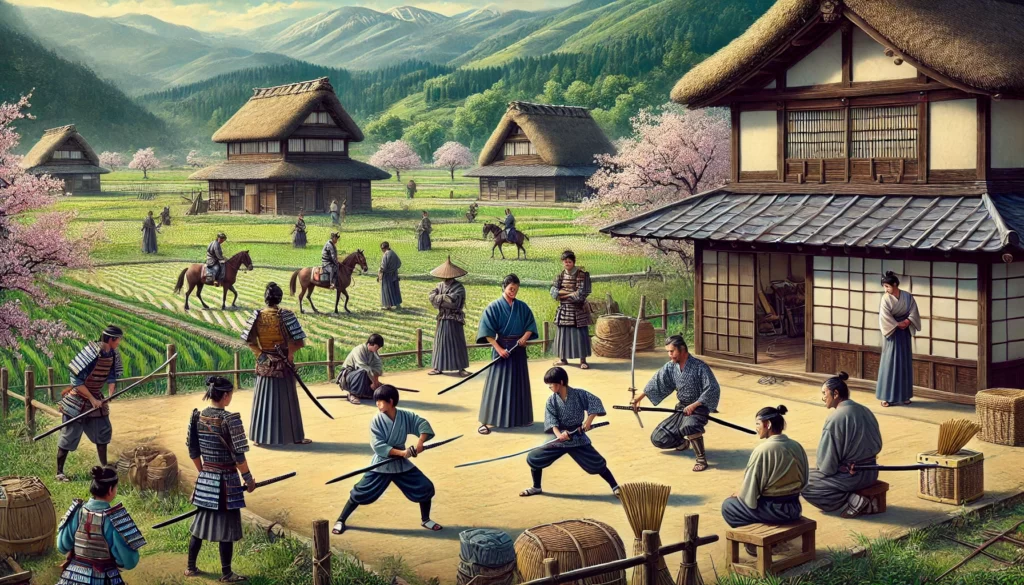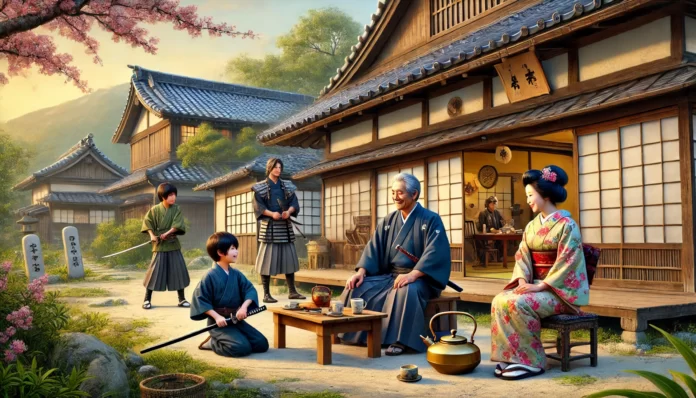Japan’s history is a treasure trove of culture, tradition, and captivating stories.
Among its many highlights, Samurai Villages stand out as living reminders of the country’s feudal past.
These villages, once home to Japan’s noble warrior class, offer an immersive experience of samurai life, showcasing preserved architecture, ancient artifacts, and a palpable sense of history.
Whether you are a history enthusiast, a cultural traveler, or simply curious, visiting Samurai Villages provides a rare opportunity to step back in time.
In this article, we delve into the essence of Samurai Villages, their historical significance, and the top 5 destinations that deserve a spot on your itinerary.
Samurai Villages
What Are Samurai Villages?
Samurai Villages are historical settlements that served as homes and communities for samurai warriors during Japan’s feudal era (12th to 19th century).
These warriors, who played a crucial role in shaping Japan’s history, were not just skilled fighters but also administrators, scholars, and cultural patrons.
In these villages, samurai lived with their families, trained in martial arts, and served their feudal lords (daimyo). The villages typically featured:
- Samurai Residences (Bukeyashiki): Homes designed with simplicity and functionality, reflecting the disciplined lifestyle of samurai.
- Castles and Fortifications: Centers of governance and military strategy.
- Training Schools: Institutions like Nisshinkan in Aizuwakamatsu, where young samurai were educated in martial arts and ethics.
- Cultural Elements: Tea houses, gardens, and shrines integral to samurai life.
Many of these villages have been carefully preserved or restored, allowing visitors to experience the architecture, landscapes, and traditions of the samurai era.
The Role of Samurai in Japanese History
Before we explore the top destinations, it’s essential to understand the role of samurai in Japan’s history.
The samurai were members of a military caste that emerged during the Heian period and rose to prominence during the Kamakura shogunate (1185–1333).
Over centuries, they evolved from warriors into influential leaders and cultural icons.
Key aspects of samurai life included:
- Bushido (The Way of the Warrior): A code emphasizing honor, discipline, loyalty, and self-sacrifice.
- Military Service: Samurai were bound to serve their lords in battle, often living in strategic locations near castles.
- Cultural Contributions: Samurai were patrons of the arts, including tea ceremonies, calligraphy, and poetry.
Understanding these elements enhances the appreciation of Samurai Villages, as they reflect these values and traditions.
Top 5 Samurai Villages in Japan
1. Kakunodate, Akita Prefecture
Known as the “Little Kyoto of Tohoku,” Kakunodate boasts one of the best-preserved samurai districts in Japan. Established in the early 17th century, this village offers a rich glimpse into samurai life.
- Key Attractions:
- The Ishiguro Samurai House, a family residence that offers guided tours.
- Streets lined with seasonal cherry blossoms, creating a magical atmosphere in spring.
- Why Visit? Kakunodate’s blend of natural beauty and historical authenticity makes it a must-visit destination.
2. Kanazawa, Ishikawa Prefecture
The historic Nagamachi district in Kanazawa is a well-preserved samurai area, famous for its mud-brick walls, narrow lanes, and water canals.
- Key Attractions:
- The Nomura Clan Samurai House, featuring a stunning Japanese garden and a display of samurai artifacts.
- Nearby Kanazawa Castle, once a strategic military hub.
- Why Visit? Kanazawa offers a perfect blend of history and modernity, with its samurai district located near the bustling city center.
3. Hagi, Yamaguchi Prefecture
Nestled along the Sea of Japan, Hagi is a coastal gem with a rich samurai heritage. This village retains its traditional layout, making it a time capsule of the Edo period.
- Key Attractions:
- Kikuya Lane, home to several samurai residences.
- The Hagi Castle Ruins, set in the picturesque Shizuki Park.
- Why Visit? Hagi’s serene atmosphere and well-preserved architecture make it ideal for those seeking an authentic experience.
4. Aizuwakamatsu, Fukushima Prefecture
Often referred to as the “Samurai City,” Aizuwakamatsu played a significant role during the Boshin War (1868–1869).
- Key Attractions:
- Tsuruga Castle, a reconstructed fortress offering panoramic views and exhibits on samurai culture.
- Nisshinkan Samurai School, where visitors can learn about samurai education and ethics.
- Why Visit? Aizuwakamatsu’s rich history and engaging attractions make it a highlight for history buffs.
5. Shimabara, Nagasaki Prefecture
Shimabara is unique for its connection to both samurai and the Christian uprising during the Shimabara Rebellion (1637–1638).
- Key Attractions:
- The Shimabara Samurai District, featuring preserved residences with original layouts.
- Shimabara Castle, which houses artifacts from the rebellion and samurai life.
- Why Visit? Shimabara offers a fascinating blend of samurai and Christian history, making it a distinct destination.
What to Expect When Visiting Samurai Villages
When visiting Samurai Villages, you can expect:
- Authentic Architecture: Traditional homes, gates, and walls preserved to reflect samurai aesthetics.
- Historical Artifacts: Exhibits featuring weapons, armor, calligraphy, and personal items.
- Cultural Activities: Opportunities to experience tea ceremonies, kimono rentals, or even samurai reenactments.
- Scenic Landscapes: Many villages are set against stunning natural backdrops, enhancing the experience.
Why Samurai Villages Matter

Samurai Villages are more than historical sites; they are living museums that preserve the legacy of Japan’s warrior class.
Visiting these villages helps:
- Support local communities that maintain these heritage sites.
- Educate future generations about Japan’s feudal history.
- Foster a deeper appreciation of Japanese culture and traditions.
Conclusion
Exploring Japan’s Samurai Villages is a journey through time, offering insights into the life and legacy of the samurai.
From the cherry blossoms of Kakunodate to the historic streets of Hagi, these destinations captivate visitors with their beauty and historical depth.
Plan your trip to these remarkable villages and immerse yourself in the enduring spirit of the samurai.
By preserving and appreciating these sites, we ensure that their stories continue to inspire for generations to come.
Yu might like this: Samurai Armor Design








